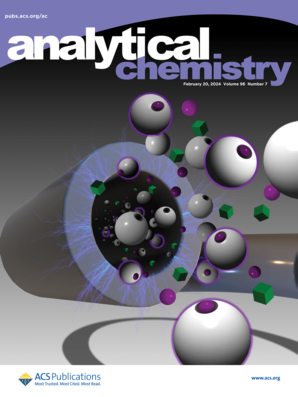拉曼峰特征匹配:通过特征增强增强光谱分析
IF 6.7
1区 化学
Q1 CHEMISTRY, ANALYTICAL
引用次数: 0
摘要
拉曼光谱已成为现代科学研究和工业应用中的关键技术,提供具有强大分子指纹功能的无损,高分辨率分析。拉曼光谱特征的提取是光谱数据分析的关键步骤,直接影响样品的识别、分类和定量结果。然而,将机器学习模型中的重要数据特征与特定环境的生物签名相结合,以获得对光谱分析有意义的见解,仍然是一个重大挑战。本文提出了拉曼峰值特征匹配(RPFM)方法,该方法将蛋白质峰值特征与从机器学习模型中提取的显著乳腺细胞数据特征进行匹配。随后将特征增强应用于匹配保留的乳腺细胞特征,从而增强光谱分析能力。将RPFM方法应用于乳腺细胞光谱进行特征增强,使用线性支持向量机模型的重分类准确率达到97.12%,比未进行特征增强的模型性能提高8.34%。RPFM方法还成功地应用于广义线性逻辑回归和基于树的极端梯度增强,证明了其在各种机器学习算法中的通用性。RPFM方法利用数据驱动的机器学习模型,同时弥补了无法考虑特定专业背景知识的缺陷。该方法显著提高了光谱分析在生物和医学应用中的准确性和有效性,为机器学习算法提供了一个新的框架来执行增强拉曼光谱分析。本文章由计算机程序翻译,如有差异,请以英文原文为准。

Raman Peak Features Matching: Enhancing Spectral Analysis through Feature Augmentation
Raman spectroscopy has emerged as a pivotal technology in modern scientific research and industrial applications, offering nondestructive, high-resolution analysis with robust molecular fingerprinting capabilities. The extraction of Raman spectral features is a critical step in spectral data analysis, directly influencing sample identification, classification, and quantitative outcomes. However, integrating important data features from machine learning models with context-specific biosignatures to derive meaningful insights into spectral analysis remains a significant challenge. Herein, the Raman Peak Feature Matching (RPFM) method is proposed, which matches protein peak features with salient breast cell data features extracted from the machine learning models. Feature augmentation is subsequently applied to the matching-retained breast cell features, thereby enhancing spectral analysis capabilities. The RPFM method is applied to breast cell spectra for feature augmentation with a reclassification accuracy of 97.12% using a linear support vector machine model, achieving an 8.34% improvement over the model’s performance without feature augmentation. The RPFM method has also been successfully implemented in generalized linear logistic regression and tree-based eXtreme gradient boosting, demonstrating its versatility across diverse machine learning algorithms. The RPFM method leverages data-driven machine learning models while compensating for the inability to take into account specific specialized background knowledge. This methodology significantly advances the accuracy and efficacy of spectral analysis in biological and medical applications, offering a novel framework for machine learning algorithms to perform augmented Raman spectral analysis.
求助全文
通过发布文献求助,成功后即可免费获取论文全文。
去求助
来源期刊

Analytical Chemistry
化学-分析化学
CiteScore
12.10
自引率
12.20%
发文量
1949
审稿时长
1.4 months
期刊介绍:
Analytical Chemistry, a peer-reviewed research journal, focuses on disseminating new and original knowledge across all branches of analytical chemistry. Fundamental articles may explore general principles of chemical measurement science and need not directly address existing or potential analytical methodology. They can be entirely theoretical or report experimental results. Contributions may cover various phases of analytical operations, including sampling, bioanalysis, electrochemistry, mass spectrometry, microscale and nanoscale systems, environmental analysis, separations, spectroscopy, chemical reactions and selectivity, instrumentation, imaging, surface analysis, and data processing. Papers discussing known analytical methods should present a significant, original application of the method, a notable improvement, or results on an important analyte.
 求助内容:
求助内容: 应助结果提醒方式:
应助结果提醒方式:


